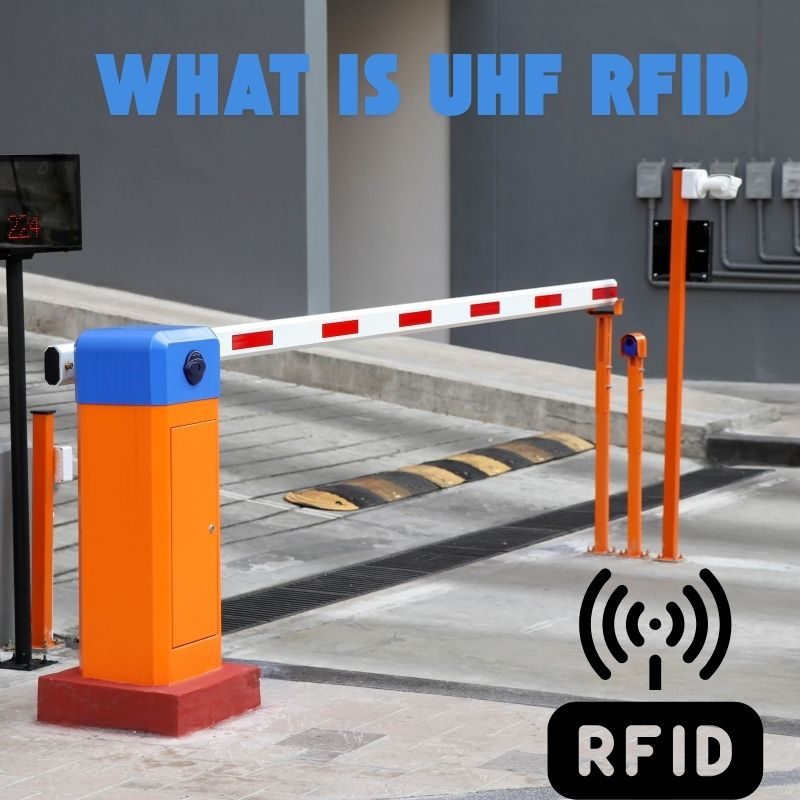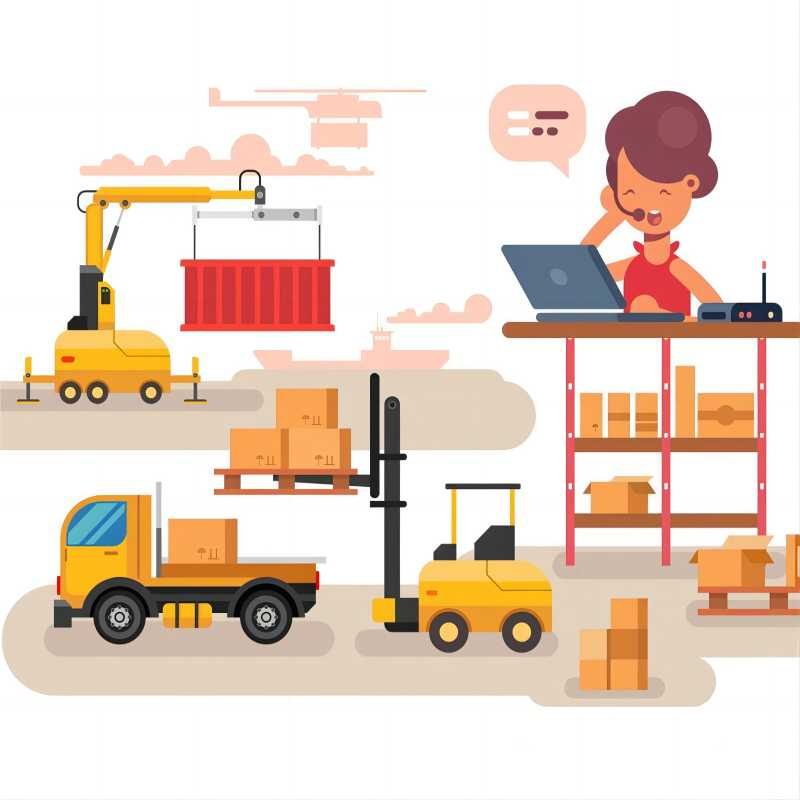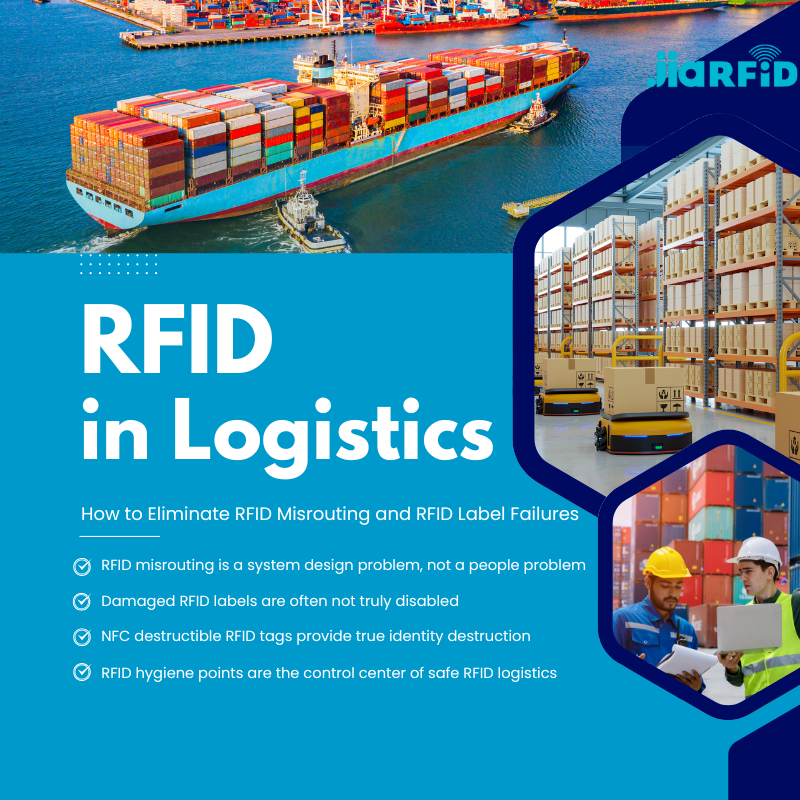
מה זה UHF RFID?
תוֹכֶן הָעִניָנִים
מָבוֹא
UHF RFID (זיהוי בתדר רדיו אולטרה-גבוה) היא טכנולוגיית זיהוי מתקדמת שתופסת תאוצה במגוון תעשיות. מקמעונאות ולוגיסטיקה ועד בריאות וחקלאות, היכולת שלה לאפשר חילופי נתונים מהירים וללא מגע משנה את אופן הפעילות של עסקים.
בין אם אתם בוחנים את טכנולוגיית RFID בפעם הראשונה ובין אם אתם מעוניינים להעמיק את הידע שלכם בנושא, מדריך זה ילווה אתכם לאורך כל הדרך. UHF RFID הוא, איך הוא עובד, היישומים שלו, ולמה זו טכנולוגיה שחובה להכיר ב-2025.

מה זה UHF RFID?
UHF RFID, קיצור של Ultra-High Frequency Radio Frequency Identification (זיהוי בתדר רדיו גבוה במיוחד), היא טכנולוגיית תקשורת אלחוטית המשתמשת בגלי רדיו לזיהוי ומעקב אחר תגיות המוצמדות לאובייקטים. זוהי אחת משלוש קטגוריות התדרים העיקריות בטכנולוגיית RFID — שתי הקטגוריות האחרות הן תדר נמוך (LF) ותדר גבוה (HF).
UHF פועל בדרך כלל בטווח שבין 860 MHz ל-960 MHz, והוא ידוע בזכות:
- טווחי קריאה ארוכים יותר (עד 12 מטרים ויותר)
- העברת נתונים מהירה יותר
- יכולת קריאה בכמויות גדולות
במילים פשוטות יותר, UHF RFID דומה ל“ברקוד על סטרואידים” דיגיטלי — אין צורך בקו ראייה, וניתן לקרוא מאות פריטים באופן מיידי.
איך UHF RFID עובד?
כדי להבין כיצד פועל RFID UHF, בואו נבחן את מרכיביו העיקריים:
- תגיות RFID: מכילים שבב אלקטרוני ואנטנה לאחסון נתונים.
- קוראי RFID: משדר גלי רדיו ומקבל נתונים מתגים.
- אנטנות: הגבר את האות בין התגים לקוראים.
- תוכנה/תוכנה אמצעית: מעבד ומנהל את הנתונים שנאספו.
ישנם שני סוגים עיקריים של תגי UHF RFID:
- תגי UHF פסיביים: הסתמך על האנרגיה מהאות של הקורא; זול יותר ונפוץ יותר.
- תגי UHF פעילים: מופעל באמצעות סוללה; מתאים ליישומים לטווח ארוך ובזמן אמת.
פונקציונליות עיקרית:
- הקורא משדר אות בתדר UHF.
- התג מקבל אנרגיה, נדלק ושולח את הנתונים שלו בחזרה.
- הקורא אוסף נתונים אלה ושולח אותם למערכת אחורית לעיבוד.
המערכת יכולה לקרוא מספר תגים בו-זמנית, אפילו במהירות גבוהה — מה שהופך את טכנולוגיית UHF RFID לאידיאלית עבור סביבות דינמיות כמו מסועים או מלאי הנע במהירות.
יתרונות טכנולוגיית RFID UHF
מדוע טכנולוגיית UHF RFID זוכה לפופולריות כה רבה? מכיוון שהיא פותרת אתגרים אמיתיים בתחום המעקב והאוטומציה. להלן היתרונות הבולטים:
- טווח קריאה ארוך: עד 12 מטרים, אפילו בסביבות קשות
- קריאה מרוכזת: קרא מאות תגיות בשניות
- חסכוני: תגיות פסיביות הן זולות לשימוש בקנה מידה גדול
- נראות בזמן אמת: עדכונים מיידיים על תנועת מלאי ונכסים
- לא בקו ראייה: אין צורך לסרוק ישירות כמו עם ברקודים
- מדרגיות: מתאים לפעולות קטנות או לשרשראות אספקה גלובליות
בקיצור, הוא משפר את היעילות, הדיוק והאוטומציה — עמודי התווך של העסקים המודרניים.
יישומים נפוצים של RFID UHF
טכנולוגיית UHF RFID התפתחה כטכנולוגיה מרכזית במערכות אוטומציה ומעקב מודרניות, ומציעה טווח, מהירות ורב-תכליתיות יוצאי דופן. יכולתה לקרוא מאות תגים בו-זמנית ובמרחקים ארוכים הופכת אותה לבעלת ערך רב במגוון רחב של תעשיות.
קִמעוֹנִי
- בקרת מלאי
- מערכות נגד גניבה
- תשלום אוטומטי
- עדכוני מניות בזמן אמת
לוגיסטיקה ושרשרת אספקה
- מעקב אחר משלוחים
- ניהול משטחים
- פעולות קרוס-דוקינג
- אישור מסירה
ייצור
- מעקב אחר עבודה בתהליך (WIP)
- בקרת איכות
- ניטור ציוד
שירותי בריאות
- צמידי מטופלים
- מעקב אחר ציוד
- מלאי תרופות
חַקלָאוּת
- ניטור בעלי חיים
- מעקב אחר ציוד חקלאי
- מערכות השקיה חכמות
ספריות וחינוך
- מעקב אחר ספרים
- ניהול נכסי מעבדה
- בקרת גישה
ללא קשר לענף התעשייה, טכנולוגיית RFID UHF מציעה נראות, יעילות ואיתוריות בזמן אמת.
RFID UHF לעומת RFID HF ו-LF – הבדלים עיקריים
| תכונה | LF (תדר נמוך) | HF (תדר גבוה) | UHF (תדר אולטרה-גבוה) |
|---|---|---|---|
| תֶדֶר | 125–134 קילוהרץ | 13.56 מגה-הרץ | 860–960 MHz |
| קרא טווח | ~10 ס"מ | ~1 מטר | עד 12 מטר |
| מהירות נתונים | לְהַאֵט | לְמַתֵן | מָהִיר |
| עֲלוּת | נָמוּך | לְמַתֵן | משתנה |
| מקרי שימוש | מעקב אחר בעלי חיים | תשלומים ללא מגע | שרשרת אספקה, קמעונאות, לוגיסטיקה |
טכנולוגיית RFID UHF מציעה טווח הקריאה הארוך ביותר והביצועים המהירים ביותר, מה שהופך אותה לאידיאלית עבור סביבות בקצב מהיר ומעקב בנפח גבוה.
תקנים ותקנות RFID UHF
תקנים מסדירים את השימוש העולמי ב-UHF RFID כדי להבטיח תאימות:
- EPCglobal Gen2 / ISO 18000-6C: תקן תעשייתי עבור RFID UHF פסיבי
- FCC (ארה"ב): פועל בתדר 902–928 MHz
- ETSI (אירופה): פועל בתדר 865–868 MHz
- אזורים אחרים: משתנה מעט בהתאם לתקנות התקשורת
חשוב מאוד להקפיד על עמידה בתקנות התדרים האזוריות בעת פריסת טכנולוגיית RFID UHF ברחבי העולם.
סוגי תגי RFID UHF
תגי RFID UHF פסיביים
- הנפוץ ביותר
- חסכוני
- משמש בקמעונאות, לוגיסטיקה וכו'.
תגי RFID UHF פעילים
- מופעל על סוללה
- טווח ארוך יותר
- משמש למעקב אחר נכסים בעלי ערך גבוה
תגיות חצי-פסיביות (BAP)
- מופעל באמצעות סוללה לביצועים טובים יותר
גורמי צורה של תגיות
- שיבוץ
- תוויות
- תגיות קשיחות
- תגיות מחוסמות למתכת או לסביבות קשות
בחר את סוג התג בהתאם לסביבה, לדרישות הטווח ולתקציב שלך.
אתגרים ומגבלות של RFID UHF
כמו כל טכנולוגיה, גם טכנולוגיית UHF RFID אינה מושלמת. להלן מספר נקודות שיש לקחת בחשבון:
- הפרעות מתכת ונוזלים: עלול לחסום או לעוות אותות
- גורמים סביבתיים: טמפרטורות קיצוניות עלולות להשפיע על הביצועים
- מגבלות קו ראייה: תגיות בערימות צפופות עלולות שלא להיקרא באופן אמין
- עלות מראש: הקמת תשתית יכולה להיות יקרה
- עומס יתר של נתונים: נדרשת תוכנה חזקה לטיפול באיסוף נתונים בקנה מידה גדול
אך באמצעות תכנון קפדני, ניתן למזער או לבטל לחלוטין מגבלות אלה.

מגמות עתידיות בתחום ה-UHF RFID (2025 ואילך)
טכנולוגיית RFID בתדר UHF לא רק כאן כדי להישאר — היא מתפתחת במהירות. המגמות כוללות:
- שילוב עם IoT: חיישנים חכמים + RFID = תובנות נתונים עוצמתיות
- מערכות RFID מבוססות ענן: נהל תגיות מכל מקום
- בינה מלאכותית ולמידת מכונה: ניתוח חיזוי באמצעות נתוני RFID
- ערים חכמות ותשתיות: זרימת תנועה, ניהול פסולת ועוד
- תעשייה 4.0: אוטומציה של מפעלים בזמן אמת ותאומים דיגיטליים
עם עלויות נמוכות יותר וביצועים טובים יותר, צפו לאימוץ המוני בכל הענפים עד סוף העשור.
האם טכנולוגיית RFID UHF מתאימה לכם?
UHF RFID היא טכנולוגיה עוצמתית וניתנת להרחבה, שיכולה לעזור לעסק שלך לצמצם תהליכים ידניים, לקצץ בהפסדים ולשפר את הנראות. בין אם אתה מנהל מחסן או עוקב אחר מכשירים רפואיים יקרי ערך, היתרונות של לכידת נתונים לטווח ארוך ובמהירות גבוהה הם פורצי דרך.
אך, כמו בכל טכנולוגיה, ההצלחה טמונה בהבנת נקודות החוזק שלה ובשימוש נכון בה.
מוכנים לבחון את טכנולוגיית ה-UHF RFID עבור העסק שלכם? התחילו בהתייעצות עם ספק פתרונות RFID מהימן או ביצוע תוכנית פיילוט כדי להעריך את הצרכים שלכם.
שאלות נפוצות על טכנולוגיית UHF RFID
מה פירוש UHF RFID?
UHF RFID הוא קיצור של Ultra-High Frequency Radio Frequency Identification (זיהוי בתדר רדיו גבוה במיוחד). המונח מתייחס למערכות RFID הפועלות בטווח תדרים של 860–960 MHz ומסוגלות לקרוא תגים ממרחק של כמה מטרים.
איך פועל RFID UHF?
מערכות RFID UHF משתמשות בגלי רדיו לתקשורת בין קורא לתג. הקורא שולח אות שמפעיל תגים פסיביים, אשר לאחר מכן שולחים את הנתונים שלהם בחזרה לקורא. הדבר מאפשר זיהוי מהיר ואלחוטי של אובייקטים ללא צורך בקו ראייה ישיר.
מהו טווח הפעולה של מערכת RFID UHF?
מערכות RFID UHF כוללות בדרך כלל טווח קריאה של 3 עד 12 מטרים (10 עד 40 רגל) עבור תגים פסיביים. תגים אקטיביים עם סוללות יכולים להאריך את הטווח באופן משמעותי, לעיתים עד 100 מטרים ויותר.

ריי ג'ואו
מאמר זה נכתב על ידי ריי ז'ו, מומחה לטכנולוגיית RFID עם יותר מ-10 שנות ניסיון בתחום.
הערות
מוצרים לוהטים

RFID בלוגיסטיקה: כיצד למנוע טעויות ניתוב RFID וכשלים בתוויות RFID
RFID בתחום הלוגיסטיקה הוא יותר מסתם כלי להאצת תהליכים. הוא הפך לחלק מרכזי באופן הפעולה של שרשראות אספקה מודרניות.

מהו ניהול פסולת באמצעות RFID
דמיינו עיר שבה כל פח אשפה מדבר — לא במובן המילולי — אלא באמצעות שבב זעיר שמודיע למערכת מתי הוא מלא, מתי הוא מרוקן ולאן הוא נלקח. זה מה שעושה כיום ניהול פסולת באמצעות RFID.

מהם אטמי בורג ומהן היישומים שלהם? | המדריך המלא
בסחר ולוגיסטיקה גלובליים, אטמי בורג ממלאים תפקיד מכריע בהבטחת אבטחת המטען ותאימותו. מכשירים קטנים אך עוצמתיים אלה נועדו לנעול מכולות משלוח, נגררים ודלתות מטען באמצעות מנגנון המונע חבלה.

מהו מגן כרטיס RFID? יתרונות, דוגמאות לשימוש ומדריך לקנייה
טכנולוגיית RFID (זיהוי בתדר רדיו) נמצאת בכל מקום: בכרטיסי האשראי, בתגי זיהוי, בכרטיסי נסיעה, במפתחות לחדרי מלון ועוד. היא מציעה מהירות ונוחות, אך היא גם פותחת את הדלת לסוג חדש של גניבה דיגיטלית המכונה “סקים”. כאן נכנס לתמונה מגן כרטיסי RFID.

צמידי RFID לאירועים: מדריך לרכישה בכמויות גדולות למארגנים
צמידי RFID לאירועים הופכים לפתרון המועדף על מארגנים הזקוקים לכניסה מהירה יותר, למניעת הונאות ולתשלומים ללא מזומן בקונצרטים, בפסטיבלים ובאצטדיוני ספורט. בניגוד לכרטיסים מנייר או לקודי QR, צמידים חכמים אלה משתמשים בשבבים מוטמעים כדי לייעל את הגישה, לאבטח את העסקאות ולשפר את חוויית האורחים.

כיצד תג RFID על השמשה הקדמית משפר את בקרת הגישה לרכב ומערכות האגרה
בעולם המהיר של ימינו, זיהוי כלי רכב צריך להיות מהיר, מאובטח וללא מגע. תג RFID על השמשה הקדמית מספק בדיוק את זה — דרך אמינה לנהל גביית אגרה, חניה וגישה לשערים מבלי לעצור את כלי הרכב.
תגים
בלוגים קשורים

RFID בלוגיסטיקה: כיצד למנוע טעויות ניתוב RFID וכשלים בתוויות RFID
RFID בתחום הלוגיסטיקה הוא יותר מסתם כלי להאצת תהליכים. הוא הפך לחלק מרכזי באופן הפעולה של שרשראות אספקה מודרניות.

מהו ניהול פסולת באמצעות RFID
דמיינו עיר שבה כל פח אשפה מדבר — לא במובן המילולי — אלא באמצעות שבב זעיר שמודיע למערכת מתי הוא מלא, מתי הוא מרוקן ולאן הוא נלקח. זה מה שעושה כיום ניהול פסולת באמצעות RFID.

מהם אטמי בורג ומהן היישומים שלהם? | המדריך המלא
בסחר ולוגיסטיקה גלובליים, אטמי בורג ממלאים תפקיד מכריע בהבטחת אבטחת המטען ותאימותו. מכשירים קטנים אך עוצמתיים אלה נועדו לנעול מכולות משלוח, נגררים ודלתות מטען באמצעות מנגנון המונע חבלה.




